Kristine Hughes's Blog, page 84
November 17, 2014
INTERESTING DOORS WE SAW AROUND LONDON
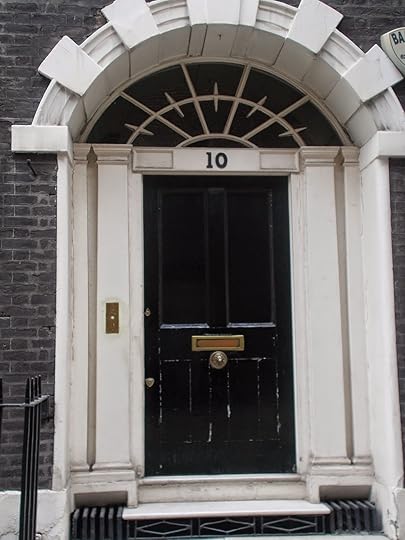
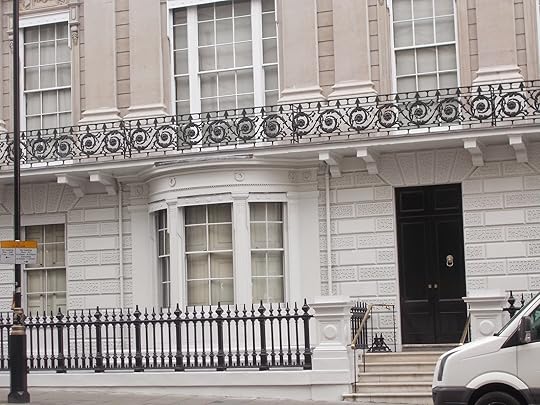
White's Club
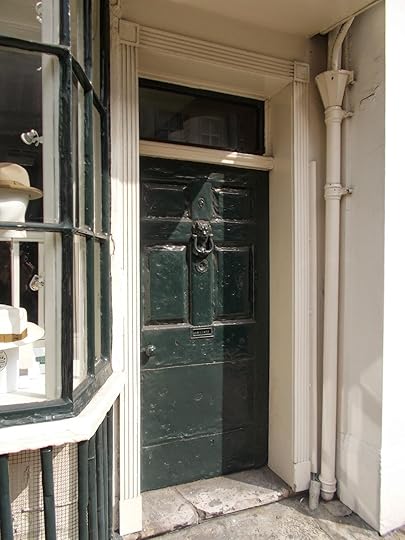
Lock's Hatters
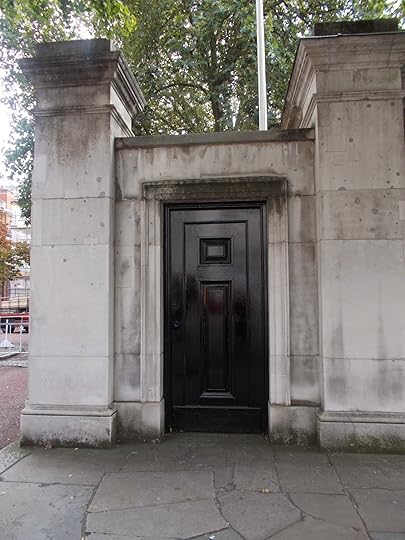
Marlborough House gatehouse

Kenwood House

Lock's Hatters, rear door
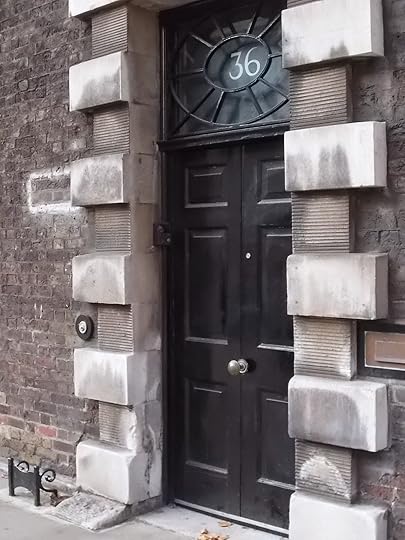


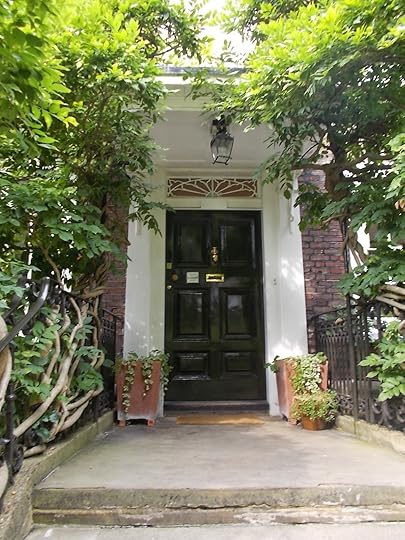

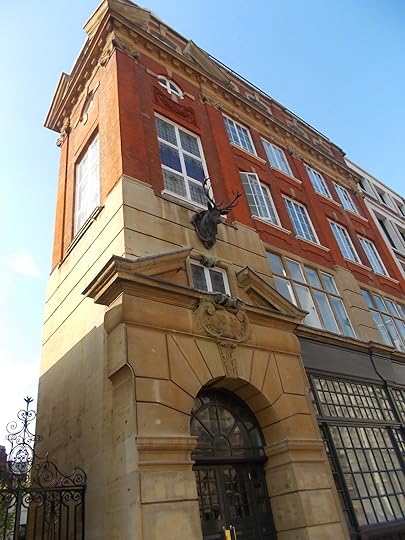
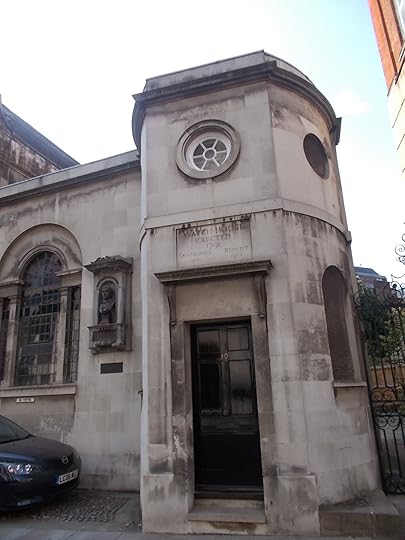
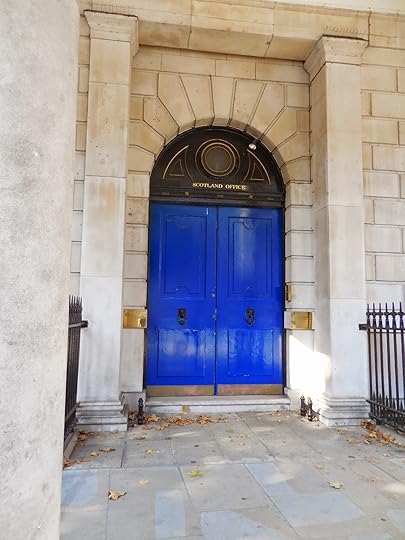 Scotland Office (Dover House), Whitehall
Scotland Office (Dover House), Whitehall
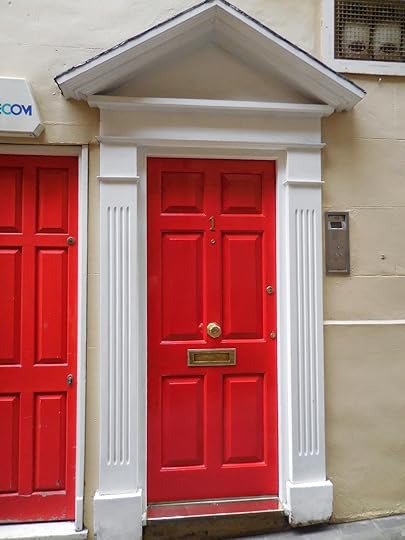

Published on November 17, 2014 00:00
November 14, 2014
A VICTORIAN OBSESSION: THE PEREZ SIMON COLLECTION AT LEIGHTON HOUSE MUSEUM
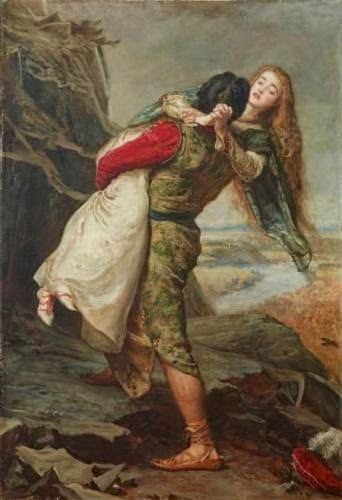
John Everett Millais. The Crown of Love. 1875. Oil on canvas.
14 November 2014 – 29 March 2015
Today saw the opening of A Victorian Obsession: The Pérez Simón Collection at Leighton House
Museum which presents rarely seen masterpieces of Victorian art belonging to the Mexican collector
Juan Antonio Pérez Simón. Until the 29 March 2015 visitors to Leighton House Museum will
experience 52 exceptional paintings from the largest Victorian private art collection outside Great
Britain, shown for the first time in the UK. Alongside six works by Frederic, Lord Leighton (four of
which will be returning to the house in which they were painted) A Victorian Obsession presents
paintings which have seldom if ever been exhibited before by many of the most celebrated Victorian
artists, illustrating the astonishingly diverse representations of women that characterised this period of British art.
The images range from the domestic to the romantic and from the symbolic to the overtly sensual.
The exhibition’s highlights include Alma-Tadema’s magnificent The Roses of Heliogabalus (1888), an iconic image of Roman decadence which has not been exhibited in London since 1913. One of the
great paintings of the Victorian era, it memorably depicts the Emperor Heliogabalus’s suffocation of
his guests beneath a torrent of rose petals. Leighton’s Greek Girls Picking up Pebbles by the Sea
(1871) is one of his earliest and most striking ‘aesthetic’ works, placing formal harmony above
narrative content and showing Leighton as the master of English drapery. Two further works,
Antigone (1882) and the sexually charged Crenaia, the Nymph of the Dargle (1880), feature the
model Dorothy Dene. Leighton’s relationship with Dene was significant in his later years, when her
role as his principal model, muse and social companion was widely commented on.
On his collection being displayed at Leighton House, Juan Antonio Pérez Simón commented ‘It is an
honour to be a part of the journey that allows these masterpieces to be shown in such an authentic
setting, and in some cases returning to their home. It gives me great joy to know that the public will be able to appreciate these exceptional paintings, making us accomplices in our everlasting duty to
nourish the spirit.’

Frederic, Lord Leighton Greek girls picking up pebbles by the sea, 1871
Senior Curator for Leighton House Museum, Daniel Robbins said ‘It has been a wonderful opportunity to work so closely with this fantastic collection of pictures. The House is now transformed by the paintings and the paintings enhanced by setting them within Leighton’s decorative interiors; there has never been an exhibition where so many outstanding pictures of this period has been shown in such a special and sympathetic environment. It’s a unique setting and a special moment for the public to see these works, some of which are returning home to the very place they were painted.
Councillor Timothy Coleridge, Cabinet Member for Planning Policy, Transport and Arts, the Royal
Borough of Kensington and Chelsea, commented ‘It is a great honour for us to be hosting the only UK exhibition of this prestigious collection at Leighton House Museum. There could be no more fitting venue than Leighton’s studio-house where some of the works were actually painted and which was familiar to so many of the artists who are represented in the exhibition. We look forward to welcoming many new visitors to discover the museum and collection for the first time and enjoy a unique aesthetic experience.’
Venue: Leighton House Museum, open daily except Tuesdays, 10am - 5.30pm
Entry: £10 / £6 concessions / Art Fund and National Trust Members 50% discount
Ticket booking: www.rbkc.gov.uk/buytickets / 0800 912 6968
More information: www.rbkc.gov.uk/AVictorianObsession
Published on November 14, 2014 00:00
WATERLOO 200 - THE DUKE AT THE NATIONAL PORTRAIT GALLERY
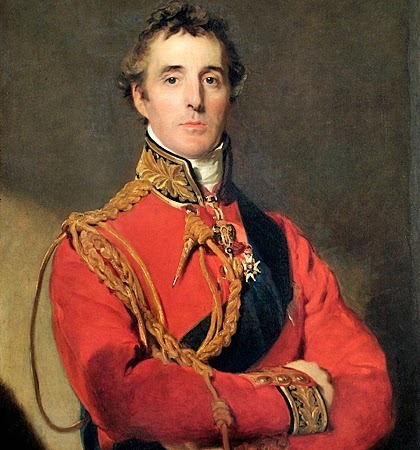
National Portrait Gallery aims for "fuller picture" of the Duke of Wellington on Waterloo anniversary
A young officer's diary destined for his sweetheart 200 years ago, a daguerreotype portrait by Antoine Claudet and Goya reworks enforced by military honours will be among the highlights when the first gallery exhibition devoted to the Duke of Wellington’s life opens next year, the National Portrait Gallery has announced.
Marking the 200th anniversary of the Battle of Waterloo, the display of 59 portraits aims to reveal how the art world took on the political, military and personal life of the Duke, including Goya’s view of Wellington entering Madrid, started in 1812 but modified twice to reflect his later honours and awards.
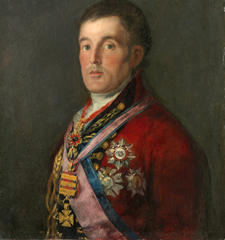
Francisco de Goya, Arthur Wellesley, 1st Duke of Wellington (1812-14)© National Gallery, LondonThomas Lawrence’s portrait was painted in the year of the Battle of Waterloo, becoming the basis for the British £5 note for 20 years from 1971.
A work by John Hoppner, of the Duke as a youthful soldier, will be one of several rarely-seen loans from the family of the Marquess of Douro, as well as the Claudet portrait, from Wellington’s 75th birthday, in 1844, and a drawing of his wife, Kitty, made by Lawrence and described as “beautiful” by curators.
A key concern of the exhibition will fall upon the soldiers who fought in Wellington’s armies, represented by eyewitness accounts and prints based on sketches by servicemen. Several satirical prints published during the Duke’s two spells as Prime Minister will also appear.
“The Duke of Wellington’s victory over Napoleon at Waterloo is well known,” observed Paul Cox, an Associate Curator at the gallery.
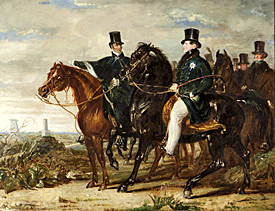
Benjamin Robert Haydon, The Duke of Wellington showing the Prince Regent (later George IV) the battlefield of Waterloo (circa 1844)© Stratfield Saye Preservation Trust“This exhibition provides the opportunity to examine less familiar aspects of his life, including the long political career during which he saw through important forward-looking legislation, but suffered a dramatic loss of popularity.
“I hope that visitors to the exhibition will gain a fuller picture of Wellington as a man, rather than simply as a hero. ’”
Wellington: Triumphs, Politics and Passions is at the National Portrait Gallery, London from March 12 – June 7 2015. Part of the Waterloo 200th Anniversary Commemorations, visit waterloo200.org.
Published on November 14, 2014 00:00
November 12, 2014
VIDEO WEDNESDAY
Published on November 12, 2014 00:00
November 10, 2014
LOOSE IN LONDON: KRISTINE'S FIRST DAY - PART THREE
Victoria arrives!
 In front of the hotel
In front of the hotelVictoria here. You wouldn't believe the scene I encountered upon entering our room at the Sloane Square Hotel. Kristine, usually smiling and eager -- Kristine, usually dressed attractively and appropriately -- Kristine, usually eager to impart all her latest adventures -- yes, this Kristine was a faint shadow of herself. I won't describe her appearance or her demeanor any further. You wouldn't believe it!
Of course I had been in France for two weeks before kissing Hubby goodbye at DeGaulle and flying to Londonwhile he returned home to the US. I was thoroughly accustomed to the time zone. I was ready for our big London fiesta: over three weeks in heaven -- exploring, learning, photographing, leading The Duke of Wellington tour, more touring -- a perfect storm of delight.
Kristine and I had been looking forward to this first meeting of ours in London, which would signal the beginning of our long anticipated English Idyll. So who was this disheveled half-conscious wraith that faced me now upon my arrival in our cluttered room, already looking like the typhoon had just passed on? Well, never one to coddle -- or condescend -- I shed my own two, compact travel bags and began to chatter. "We had a great time in Paris, blah, blah, blah..."
Two eyes made a valiant effort to open wide...and failed. Slight acknowledgement of my arrival with a nod.
"We went to Malmaison, loved the Rodin Museum, blah, blah, yadda.....why are you sitting there in the window like that? Were you watching for me?"
At last, the wraith sat up and came alive. "No. I didn’t want to lay on the bed because I’d have fallen asleep and then I’d screw up my sleep pattern. I have to stay awake until bedtime tonight. So, here I am, looking out of the bay window just like Brummell at Whites."
Well, not exactly, but close enough. We managed a big hug and, ever so gingerly, Kristine began telling me of her ordeal. And there was Big Red, all right. Immense enough to carry supplies for the Siege of Badjos, as well as several boxes of materials for the Wellington Tour.
Aha! No wonder Kristine felt like a beast of burden -- she had way too much to carry.
Kristine picks up the tale -
“I need a drink,” I told Victoria.
“I shouldn’t wonder,” she replied. “The state of you!”
“Duke of Wellington pub?”
“Absolutely! As planned. Egad, but we’ve been looking forward to this moment for months now. Our first drink together in London! Almost a month of Wellingtonmerriment ahead of us! Downton Abbey! Copenhagen! The WellingtonTour! Open Houses Weekend! Mudlarking! . . . . . . . why on earth are you wearing those things?”
I’d pulled on my fur topped boots while Victoria was rhapsodizing about the weeks ahead of us. “You’re going to have to trust me on this – they’re the only shoes I can wear right now. Everything else is too painful.”
Victoriablinked. “It’s in the 70’s outside. Those are boots.”
“I know. But they’re all I have at the moment.”
“Yeah, but it’s summer and . . . . . . . “
I grabbed Victoriaby the arm and practically frog marched her to the door, “Let’s go. I’ll tell you all about it once we’re at the pub.”
“Are you really going to wear those in public? They’ve got fur, for God’s sake.”
“I can leave a few minutes after you and meet you at the pub. That way no one will know that you’re with me. And my feet will be under the table once we get there. No one will notice my boots.”
“Don’t be silly.”
“Sorry. I thought you were ashamed to be seen with me.”
“I am ashamed to be seen with you. I said don’t be silly because I can’t go without you. I don’t know where the pub is.”
Thankfully, it was but a short stroll to the Duke ofWellington pub on Ebury Street. It was early enough that the place was nearly deserted. An adorable barman who looked to be about thirteen years old asked us what we’d be having.

Now a strange thing happened. As you may recall, I had been dreaming of a stiff rum and Coke all day long, but now that we stood before the beer taps, I suddenly wanted nothing more than a cold pint. Unfortunately, the pub had many micro brews and specialty ales. Not a recognizable brand in sight. The infant barman was kind enough to allow Victoria and I to taste a few before we ordered.

In the end, Victoria and both opted for the Oranjeboom which was fabulous. Here's how it's described:
'Quirkily Continental', Oranjeboom is a Dutch classic and was judged the 'best draught lager in the world' at the Brewing Industry International Awards. A delicious, easy-drinking Dutch drop with a hay-like hue and a herbaceous, grassy and fruity fragrance. Citrus notes on the palate speak softly of orange, kiwi and lemongrass buttressed with a hint of caramel sweetness and a gentle, drifting finish.
After our first sips, we took up our glasses and spent a good few minutes examining and photographing all of the Wellington memorabilia ranged around the walls. They even had a copy of one of my favourite Wellington portraits, which I fondly refer to as the Grandpa Artie image.


Finally, we found an empty table and took a load off. Victoria told me about her two weeks in France, whilst I regaled her with tales of my poor feet. And the Royal Hospital.
"I still can't believe that no on there knows where the painting is hung," I said, relating the story of my search for the painting entitled The Chelsea Pensioners Reading the Waterloo Despatch.
"Or what the painting is," Victoria added.
"Yeah. I mean where else would it be but at the Royal Hospital?"
"Come to think of it, I could swear I've seen it somewhere before," Victoria mused.
"At the Royal Hospital?"
"I can't recall, but somewhere. You know, there were probably a few copies made when it was commissioned by the Duke of Wellington. It was a fairly common practice. There are at least three copies of the Lawrence portrait of Artie."
"I know. I think I've seen the Chelsea Pensioners before, too, come to think of it."
"Where? You haven't been to the Royal Hospital before today."
"Damned if I know."
"Do you think we saw it when we went to the National Army Museum?" Victoria asked.
I took a sip of beer. "Could be. It seems to me that I saw it someplace in London. Someplace connected to Artie."
"Where else in London could it be?" Victoria asked. "Horse Guards?"
"Haven't the foggiest, but I'm going to go back to the Royal Hospital when we get back to London in a few weeks time to see if they find out where it is. This mystery is driving me crazy."
Eventually, we moved on to discussing other things and ordering dinner, after which I was truly ready for bed. As I fell asleep, I thought about our agenda for the next day - the newly renovated Kenwood House and Highgate Cemetery. Life was good. Even when your feet hurt.
Next installment coming soon!
Published on November 10, 2014 00:00
November 7, 2014
THE WELLINGTON CONNECTION: WARWICK CASTLE

From the Journal of Mrs. Arbuthnot, November 8, 1823
We returned home on the 4th to receive the Duke of Wellington, who staid with us till the 7th, yesterday, when we came to Warwick Castle to a ball given last night by Lady W. It was very magnificent. The old Towers were lighted up, but unfortunately there was such a fog it was hardly visible. We have spent the morning in walking round the walls and shewing the Castle to the Duke, who has never been here before. It is quite provoking to see the little interest the owners of this fine old relique of Baronial splendour and power take in it. The Castle is full of fine old family pictures, and they don't know one of them; they scarcely know their way about the walls; and Lord Warwick, instead of shewing it to the Duke, told Mr. Arbuthnot he should wait till every body was gone out and then go and poke about by himself!
Published on November 07, 2014 00:00
November 5, 2014
THANKSGIVING DINNER WITH BEN FRANKLIN
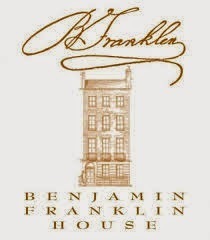
The Benjamin Franklin House Invites You to
Thanksgiving Dinner
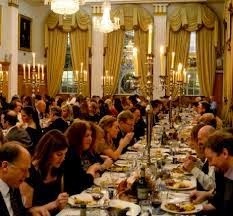
LOCATION: Clothworkers' Hall, Dunster Court,
Mincing Lane, London EC3R 7AH
Thursday 27 November, 7.30pm
An American Thanksgiving feast with all the trimmings will
take place at the magnificent Clothworkers’ Hall. Roast
turkey will be the highlight of the meal, which will also
include corn bread stuffing, mashed potatoes, green beans,
maple glazed parsnips, carrots and sweet potatoes, onions
and cranberry sauce.
Dessert: Pumpkin pie with whipped cream.
House red or white wine included in ticket price.
Franklin, in addition to suggesting the
turkey become one of America’s national symbols, practised
cooking it as part of his early work on electricity.
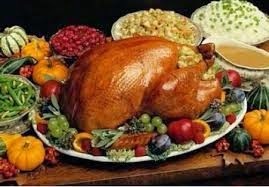
Tickets: £75 Adult/ £35 Child
Proceeds support the Benjamin Franklin House
Click for our Booking Form
Book tickets early to avoid disappointment!
.Benjamin Franklin House, 36 Craven Street WC2N 5NF
Phone: +44(0)207 839 2006 or
Email: info@BenjaminFranklinHouse.org
Published on November 05, 2014 00:30
November 3, 2014
LOOSE IN LONDON: KRISTINE'S FIRST DAY - PART TWO
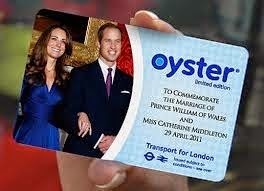
Leaving our hotel for the third time today, I made my way to the Sloane Squaretube station and topped up my Royal Wedding Oyster Card before getting on the District Line to Victoria Station. I changed to the Victoria Line and rode that up to Green Park, where I exited the tube station to find myself in the Park, bathed in glorious sunshine as I surveyed the rows of sunbathers in their blue and white striped rental chairs. I, you may recall, was wearing fur topped boots, whilst all around me people were stripped down to the barest minimum of clothing as they enjoyed the sunshine. “Look!” I told myself, “A British park!” I walked the short distance to the path that runs behind Spencer House from the Mall up to Piccadilly and took that up to the street. I looked down to the left to where Apsley House stands. A mere four blocks away (approximately). Home! At long last!
I was beginning to feel a tad tired and so decided to do Hatchard’s, followed by Café Nero, before strolling down to No. 1. Oh, Hatchard’s. Someone should write an ode to this bookshop. Someone probably has, as there’s much to wax lyrical about. On this particular day, the thing I most appreciated about Hatchard’s were the chairs they had scattered about. After finding the latest title in the 44 Scotland Streetseries, I carried the book over to a chair and took the weight off my aching feet. Sitting there was like Heaven. Hatchard’s was Heaven. Bertie’s latest adventure was Heaven. Being in Londonwas Heaven. The only drawbacks were that my feet were absolutely killing me and I was beginning to feel rotten. Really rotten. Tired and achy and hot.
“Look! You’re in London! At Hatchard’s! Just down the street from Apsley House!”
“Don’t care.”
“What!? Blasphemy! Hello? London. When a man is tired of London, a man . . . . . “
“Do shut up.”
“Maybe you should have a coffee. Café Nero is just next door in St. James’s churchyard.”
“Yes, I know where it is. This is not my first rodeo, thank you. I have been there before. Once or twice. At the very least. Thank you. Ever so much. Have you any further nuggets of redundant information you feel compelled to share with me or may we simply repair now to the spot in question?”
“Well, excuse mefor breathing.”
One knows that one is not feeling at one’s best when one can’t even summon the courtesy to be civil to oneself.
I fought my way out of the chair and onto my feet. Sitting down had been a bad idea. A truly terrible idea, as now my feet positively screamed with every step I took. I hobbled over to the check-out desk and paid for my book, feeling slightly cheated when the clerk thanked me for my purchase in an American accent.
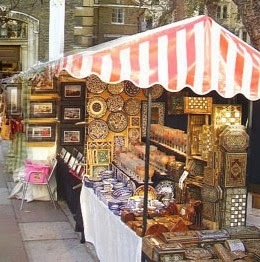
Using what felt like the last of my reserves, I found my way into the churchyard, through the market and to Café Nero, where I ordered a coffee and a raspberry muffin. Taking these outside, I sat at a table, cracked my book open and sipped my coffee. Thank God for small mercies.

“I don’t know . . . . you should be a lot happier right now. I mean you’re in London. On Piccadilly. Having a coffee from Café Nero. Down the road from Apsley House. Within crawling distance of Fortnum and Mason and the Burlington Arcade. Brummell’s statue, even.”
“You’re right," I agreed with myself. "I knowyou’re right, but somehow I can’t summon even a scrap of enthusiasm for any of it. To be honest with you, I don’t know if I’ve got the wherewithal left to get ourselves back to Sloane Squareon the tube. It suddenly all seems too much.”
“Hold on . . . . does this mean we’re not going to Apsley House?”
“I’m afraid not.”
“What? Am I hearing this right? We’re finally here, it’s just down there, and yet we’re not going? Is that what I’m hearing?”
"I can honestly say that I shouldn't enjoy it if we did, strange as it is to hear myself say that. I might be able to summon up some enthusiasm for the place if, say, you were to tell me that the Duke of Wellington was there, waiting to greet us. The first Duke, mind. Otherwise, I have no wish to take the chance of embarrassing myself by passing out cold in the Piccadilly Drawing Room. Not that I'd actually be able to climb the stairs to the first floor." So me and myself sat reading for a bit longer whilst we finished our coffee, people watching from the comfort of my chair. At last, I dragged my way out of the churchyard and along Piccadilly, sparing not a glance at the glorious window displays at Fortnums nor the merest peek at the Burlington Arcade. My eyes were fixed upon the Green Park tube station as I prayed I had enough gas left to find my way back to Sloane Square.
If I got out at Victoria Station, I'd be able to secure myself some Coke and so be able to make myself a rum and same once back in our hotel room. However, that would entail my climbing many steps out of the tube, through the Station proper to the nearest shop and then doing it all in reverse order to board the train again. It was simply beyond me. Besides, I honestly felt myself too tired to be bothered with drinking the demon rum. The situation was dire, indeed.
Thank God (and I say that sincerely) our room was ready by the time I returned to the hotel. I carried the bag with my laptop in it to the room myself, leaving Big read and my other bag for the staff to bring up.

It must be said that I've stolen the photo above off the internet and this is not exactly what our room looked like - we had twin beds, but the rest is fairly spot on. We had a window just like this one, overlooking Sloane Square. I got out my book, pulled off my boots and sank gratefully onto the bed. Then I sat bolt upright. I had two hours before Victoria arrived at the hotel. If I lay on the bed, I would surely fall asleep. I could have sworn that I'd slept on the flight over to England, but you couldn't have proven it by me. I felt exhausted. If I fell asleep now, I'd be out like a light. And up again in just two hours. I'd only feel worse by the time Victoria arrived. Oh, how the two of us had looked forward to our meeting - finally - in Sloane Square. I couldn't screw this up. I had to be awake, at the very least. So I pulled the desk chair over to the window and sat bolt upright upon it. Then I began to giggle. I was sitting in a London bow window, surveying the scene before me a la Brummell, my feet sore, my body beyond tired and my mind, obviously, deranged. I definitely should have stopped for Coke. I already had the rum. I'd packed a bottle of it in my suitcase. Which, come to think of it, may have gone some way towards the overage in the weight of my luggage.
Reader, you'll understand that as far as I was concerned, Victoria couldn't arrive soon enough.
Part Three Coming Soon!
Published on November 03, 2014 00:00
October 31, 2014
TRAVELS WITH VICTORIA: RICHARD LIONHEART'S FORTRESS
High above the Seine in Normandy stands the ruins of a fortress built in 1196 by Richard the Lionheart, aka King Richard I of England and Duke of Normandy (1157-1199), Chateau Gailliard.
 Chateau Gailliard, les Andelys, Normandy On a recent trip to France, I took the challenge of walking up this steep -- I mean REALLY steep hill to the ruins of the Chateau Gailliard. I almost gave up when the paved path ran out and we had to negotiate several paths that were no more than pebble-filled dry gullies. But I kept going, taking a breather with many of the others trudging upwards.
Chateau Gailliard, les Andelys, Normandy On a recent trip to France, I took the challenge of walking up this steep -- I mean REALLY steep hill to the ruins of the Chateau Gailliard. I almost gave up when the paved path ran out and we had to negotiate several paths that were no more than pebble-filled dry gullies. But I kept going, taking a breather with many of the others trudging upwards.

Eventually we managed to reach the summit, breathless from the climb and from the fantastic view of the river below. This fortress was designed to be siege-proof and was amazingly expensive. According to Wikipedia's entry on Richard I, it cost £15,000 to £20,000 in 1196-1198.
 Statue of Richard I in front of London's Parliament Richard I (1157-1199) was the son of King Henry II and Queen Eleanor of Aquitaine. As a side note, remember the great film Lion in Winter, starring Peter O'Toole as Henry and Katherine Hepburn as Eleanor? Originally a stage play by James Goldman, the film was released in 1968 with a young Anthony Hopkins as Richard. Portraying a Christmas meeting between the estranged Henry and Eleanor in 1183, the film won three Oscars and was nominated for four others. If you haven't seen it lately, do yourself a favor and find a copy.
Statue of Richard I in front of London's Parliament Richard I (1157-1199) was the son of King Henry II and Queen Eleanor of Aquitaine. As a side note, remember the great film Lion in Winter, starring Peter O'Toole as Henry and Katherine Hepburn as Eleanor? Originally a stage play by James Goldman, the film was released in 1968 with a young Anthony Hopkins as Richard. Portraying a Christmas meeting between the estranged Henry and Eleanor in 1183, the film won three Oscars and was nominated for four others. If you haven't seen it lately, do yourself a favor and find a copy.
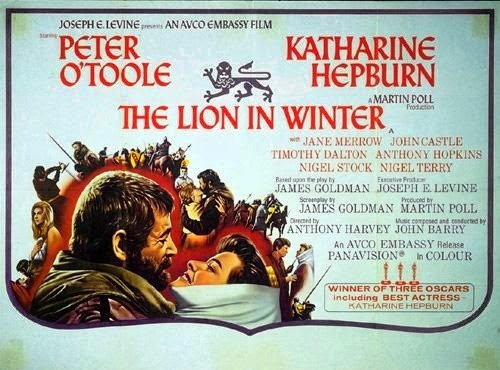 In his short lifetime of just 42 years, Richard I gained a worldwide reputation. He became the Duke of Aquitaine in 1171. As one of Henry's three rebellious sons, Richard allied himself with Phillip II of France, and eventually defeated Henry II, who died a few days later in 1189. Richard became Duke of Normandy and was crowned King of England in Westminster Abbey.
In his short lifetime of just 42 years, Richard I gained a worldwide reputation. He became the Duke of Aquitaine in 1171. As one of Henry's three rebellious sons, Richard allied himself with Phillip II of France, and eventually defeated Henry II, who died a few days later in 1189. Richard became Duke of Normandy and was crowned King of England in Westminster Abbey.

 Richard LionHeart and Phillip led the Third Crusade, against Saladin, with mixed results. On his return to Europe in 1191, Richard was captured and imprisoned by the Duke of Austria and held by the Holy Roman Emperor. He was released in 1194 after payment of a large ransom.
Richard LionHeart and Phillip led the Third Crusade, against Saladin, with mixed results. On his return to Europe in 1191, Richard was captured and imprisoned by the Duke of Austria and held by the Holy Roman Emperor. He was released in 1194 after payment of a large ransom.
 View of the Seine from the Chateau
View of the Seine from the Chateau
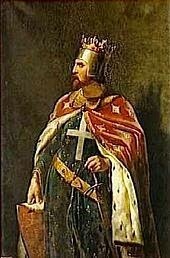 Romantic vision of Richard Involved in many more battles with family, assorted enemies and former allies, Richard was shot by a young bowman. His wounds were fatal but he lingered for several days, settling his bequests and pardoning the bowman (who was nevertheless executed after Richard's death)/.
Romantic vision of Richard Involved in many more battles with family, assorted enemies and former allies, Richard was shot by a young bowman. His wounds were fatal but he lingered for several days, settling his bequests and pardoning the bowman (who was nevertheless executed after Richard's death)/.
 Chateau Gailliard After a 7-month siege, the Castle fell to Phillip of France in 1204. Once Gailliard was no longer a strong defense, the rest of Normandy fell to the French later that year. The fortress changed hands several more times during various wars, and though it has long been in ruins, one can still understand why it was such an important strategic location. The panoramic picture below, from Wikipedia, gives a more complete view than I was able to catch either from below or above.
Chateau Gailliard After a 7-month siege, the Castle fell to Phillip of France in 1204. Once Gailliard was no longer a strong defense, the rest of Normandy fell to the French later that year. The fortress changed hands several more times during various wars, and though it has long been in ruins, one can still understand why it was such an important strategic location. The panoramic picture below, from Wikipedia, gives a more complete view than I was able to catch either from below or above.

 Richard LionHeart
Richard LionHeart
 Chateau Gailliard, les Andelys, Normandy On a recent trip to France, I took the challenge of walking up this steep -- I mean REALLY steep hill to the ruins of the Chateau Gailliard. I almost gave up when the paved path ran out and we had to negotiate several paths that were no more than pebble-filled dry gullies. But I kept going, taking a breather with many of the others trudging upwards.
Chateau Gailliard, les Andelys, Normandy On a recent trip to France, I took the challenge of walking up this steep -- I mean REALLY steep hill to the ruins of the Chateau Gailliard. I almost gave up when the paved path ran out and we had to negotiate several paths that were no more than pebble-filled dry gullies. But I kept going, taking a breather with many of the others trudging upwards.

Eventually we managed to reach the summit, breathless from the climb and from the fantastic view of the river below. This fortress was designed to be siege-proof and was amazingly expensive. According to Wikipedia's entry on Richard I, it cost £15,000 to £20,000 in 1196-1198.
 Statue of Richard I in front of London's Parliament Richard I (1157-1199) was the son of King Henry II and Queen Eleanor of Aquitaine. As a side note, remember the great film Lion in Winter, starring Peter O'Toole as Henry and Katherine Hepburn as Eleanor? Originally a stage play by James Goldman, the film was released in 1968 with a young Anthony Hopkins as Richard. Portraying a Christmas meeting between the estranged Henry and Eleanor in 1183, the film won three Oscars and was nominated for four others. If you haven't seen it lately, do yourself a favor and find a copy.
Statue of Richard I in front of London's Parliament Richard I (1157-1199) was the son of King Henry II and Queen Eleanor of Aquitaine. As a side note, remember the great film Lion in Winter, starring Peter O'Toole as Henry and Katherine Hepburn as Eleanor? Originally a stage play by James Goldman, the film was released in 1968 with a young Anthony Hopkins as Richard. Portraying a Christmas meeting between the estranged Henry and Eleanor in 1183, the film won three Oscars and was nominated for four others. If you haven't seen it lately, do yourself a favor and find a copy.
 In his short lifetime of just 42 years, Richard I gained a worldwide reputation. He became the Duke of Aquitaine in 1171. As one of Henry's three rebellious sons, Richard allied himself with Phillip II of France, and eventually defeated Henry II, who died a few days later in 1189. Richard became Duke of Normandy and was crowned King of England in Westminster Abbey.
In his short lifetime of just 42 years, Richard I gained a worldwide reputation. He became the Duke of Aquitaine in 1171. As one of Henry's three rebellious sons, Richard allied himself with Phillip II of France, and eventually defeated Henry II, who died a few days later in 1189. Richard became Duke of Normandy and was crowned King of England in Westminster Abbey. 
 Richard LionHeart and Phillip led the Third Crusade, against Saladin, with mixed results. On his return to Europe in 1191, Richard was captured and imprisoned by the Duke of Austria and held by the Holy Roman Emperor. He was released in 1194 after payment of a large ransom.
Richard LionHeart and Phillip led the Third Crusade, against Saladin, with mixed results. On his return to Europe in 1191, Richard was captured and imprisoned by the Duke of Austria and held by the Holy Roman Emperor. He was released in 1194 after payment of a large ransom. View of the Seine from the Chateau
View of the Seine from the Chateau  Romantic vision of Richard Involved in many more battles with family, assorted enemies and former allies, Richard was shot by a young bowman. His wounds were fatal but he lingered for several days, settling his bequests and pardoning the bowman (who was nevertheless executed after Richard's death)/.
Romantic vision of Richard Involved in many more battles with family, assorted enemies and former allies, Richard was shot by a young bowman. His wounds were fatal but he lingered for several days, settling his bequests and pardoning the bowman (who was nevertheless executed after Richard's death)/.
 Chateau Gailliard After a 7-month siege, the Castle fell to Phillip of France in 1204. Once Gailliard was no longer a strong defense, the rest of Normandy fell to the French later that year. The fortress changed hands several more times during various wars, and though it has long been in ruins, one can still understand why it was such an important strategic location. The panoramic picture below, from Wikipedia, gives a more complete view than I was able to catch either from below or above.
Chateau Gailliard After a 7-month siege, the Castle fell to Phillip of France in 1204. Once Gailliard was no longer a strong defense, the rest of Normandy fell to the French later that year. The fortress changed hands several more times during various wars, and though it has long been in ruins, one can still understand why it was such an important strategic location. The panoramic picture below, from Wikipedia, gives a more complete view than I was able to catch either from below or above.

 Richard LionHeart
Richard LionHeart
Published on October 31, 2014 00:30
October 29, 2014
NEW EXHIBIT AT THE METROPOLITAN MUSEUM OF ART

Death Becomes Her: A Century of Mourning Attire
October 21, 2014-February 1, 2015
The Costume Institute’s first fall exhibition in seven years, is on view in The Metropolitan Museum of Art’s Anna Wintour Costume Center from October 21, 2014, through February 1, 2015. The exhibition explores the aesthetic development and cultural implications of mourning fashions of the 19th and early 20th centuries. Approximately 30 ensembles, many of which are being exhibited for the first time, reveal the impact of high-fashion standards on the sartorial dictates of bereavement rituals as they evolved over a century.
With the reopening of The Costume Institute space in May as the Anna Wintour Costume Center, the department returns to mounting two special exhibitions a year, once again including a fall show, in addition to the major spring exhibition. This is the first fall exhibition The Costume Institute has organized since blog.mode: addressing fashion in 2007.
“The predominantly black palette of mourning dramatizes the evolution of period silhouettes and the increasing absorption of fashion ideals into this most codified of etiquettes,” said Harold Koda, Curator in Charge of The Costume Institute, who is curating the exhibition with Jessica Regan, Assistant Curator. “The veiled widow could elicit sympathy as well as predatory male advances. As a woman of sexual experience without marital constraints, she was often imagined as a potential threat to the social order.”
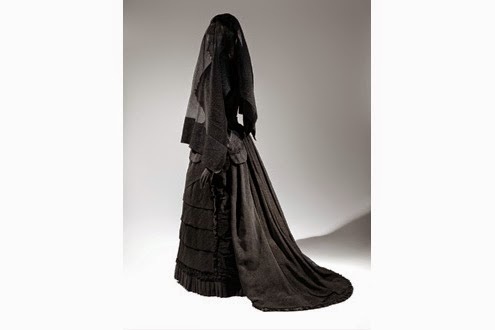
Exhibition Overview
The thematic exhibition is organized chronologically and features mourning dress from 1815 to 1915, primarily from The Costume Institute’s collection. The calendar of bereavement’s evolution and cultural implications are illuminated through women’s clothing and accessories, showing the progression of appropriate fabrics from mourning crape to corded silks, and the later introduction of color with shades of gray and mauve.
“Elaborate standards of mourning set by royalty spread across class lines via fashion magazines,” said Ms. Regan, “and the prescribed clothing was readily available for purchase through mourning ‘warehouses’ that proliferated in European and American cities by mid-century.”
The Anna Wintour Costume Center’s Carl and Iris Barrel Apfel Gallery orients visitors to the exhibition with fashion plates, jewelry, and accessories. The main Lizzie and Jonathan Tisch Gallery illustrates the evolution of mourning wear through high fashion silhouettes and includes mourning gowns worn by Queen Victoria and Queen Alexandra. Examples of restrained simplicity are shown alongside those with ostentatious ornamentation. The predominantly black clothes are set off within a stark white space amplified with historic photographs and daguerreotypes.
Related Programs
In conjunction with the exhibition, a Halloween event on October 31, 6:30–8:30 p.m., will encourage visitors to chart their own path through the galleries and join drop-in,
interactive experiences with art. Ms. Regan will give a Friday Focus lecture, Women in Black: Fashioning Mourning in the 19th Century, on Friday, November 21, at 4:00 p.m. Musical programming includes a special pop-up concert featuring Icelandic cellist Hildur Guðnadóttir on October 17 at 6:00 p.m., and a performance by vocalist Theo Bleckmann on February 7 at 7:00 p.m.The Museum’s website, www.metmuseum.org/deathbecomesher, features information on the exhibition and related programs.
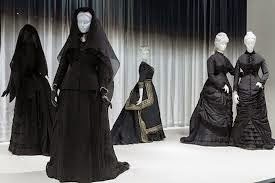
Click here for a review of the Death Becomes Her by Elle Magazine
Harper's Bazaar reviews the show here and includes a slideshow of the best mourning costumes in film.
Published on October 29, 2014 00:00
Kristine Hughes's Blog
- Kristine Hughes's profile
- 6 followers
Kristine Hughes isn't a Goodreads Author
(yet),
but they
do have a blog,
so here are some recent posts imported from
their feed.




